Everyone has loyalties to their favorite brands, but there’s a good chance your favorite products result from two separate brands working together.
One of my own beloved childhood memories was a product of co-branding: Betty Crocker partnered with Hershey’s to include chocolate syrup in its signature brownie recipe.
There’s something brilliant about that co-branded product: It’s a fun way to marry two classic brands into one delicious experience for fans of baking and chocolate alike. In fact, these brands still create new co-branded products to this day.
Co-branding can be an effective way to build business, boost awareness, and break into new markets, and for a partnership to truly work, it has to be a win-win for all players in the game. Both audiences need to find value — like chocolate-loving fans of Betty Crocker and Hershey’s.
There are a ton of great examples of co-branding partnerships out there. To show you what makes them so successful, we’ve curated a list of examples of great co-branding partnerships to inspire you.
Featured Resource: Free Co-Marketing Templates
Looking to ramp up your co-branding program? Download HubSpot’s Co-Marketing Kit + Templates to learn more about co-branding best practices and build out your process with universal, customizable templates.
Why is co-branding important?
One of the most important ways that people can bring value is by coming together. And that power grows when it happens at brand-scale.
Expand Your Brand’s Reach
Co-branding multiplies your brand’s audience with the audience of another respected brand. So, you add reach with your partner’s customers and followers, and they add reach with your fans.
And, a co-branding partnership is more than the sum of its parts. Your collaboration can help both partners expand brand reach into new locations, demographics, and more. Plus it can reinforce your brand positioning.
Cost and Resource-Sharing
Marketing and branding efforts can be expensive, especially at scale. Co-branding gives both teams the resources of their partner — adding more staff, budget, and knowledge to each campaign. Co-branding also offers great learning opportunities for your team.
Improve Brand Trust and Customer Loyalty
If you have a new brand, you can boost your reputation with an established brand. This helps build trust with customers because it shows them you respect consistency. It combines their loyalty to another brand with the value they believe your brand can offer.
If you’re running an established brand, partnering with a fresh startup brand shows your investment in innovation. This could translate to new and exciting products or a hot take on culture or messaging.
Boost Sales and Revenue
An expanded audience, more brand trust, and loyalty from return customers logically translate to sales. Partnerships can also offer extra revenue from new products and services that your brand might have a hard time tapping into alone.
1. GoPro & Red Bull
Co-Branding Campaign: Stratos
GoPro doesn’t just sell portable cameras, and Red Bull doesn’t just sell energy drinks. Instead, both have established themselves as lifestyle brands — in particular, a lifestyle that’s action-packed, adventurous, fearless, and usually pretty extreme. These shared values make them a perfect pairing for co-branding campaigns, especially those surrounding action sports.
To make the partnership work, GoPro equips athletes and adventurers from around the world with the tools and funding to capture things like races, stunts, and action sport events on video — from the athlete’s perspective. At the same time, Red Bull uses its experience and reputation to run and sponsor these events.
“GoPro camera technology is allowing us to complement the programming by delivering new athlete perspectives that have never been seen before,” said Sean Eggert, Red Bull’s former VP of sports marketing. The collaboration continues to use exclusive GoPro content to enhance both companies’ growth.
Why the Stratos Co-Branding Campaign Works
While GoPro and Red Bull have collaborated on many events and projects together, perhaps the biggest collaboration stunt they’ve done was “Stratos,” in which Felix Baumgartner jumped from a space pod more than 24 miles above Earth’s surface with a GoPro strapped to his person. Not only did Baumgartner set three world records that day, but he also embodied the value of reimagining human potential that defines both GoPro and Red Bull.
2. Rachel Comey, Victor Glemaud, Sandy Liang, Nili Lotan & Target
Co-branding Campaign: High-End Fashion
Anyone who’s designer-conscious knows high fashion and Target aren’t exactly the same caliber regarding quality. Dresses by designers like Sandy Liang go for around $600, whereas dresses sold by Target go for more like $35 a pair. See what I mean?
But that discrepancy in pricing is exactly why these designers and Target brand decided to partner with one another. To support its brand positioning as trendy and fashionable, Target has paired with high-end fashion designers Rachel Comey, Victor Glemaud, Sandy Liang, and Nili Lotan to offer exclusive branded items for a limited time.
-Aug-05-2022-03-56-17-89-PM.png?width=624&name=21%20Examples%20of%20Successful%20Co-Branding%20Partnerships%20(And%20Why%20Theyre%20So%20Effective)-Aug-05-2022-03-56-17-89-PM.png)
Why Target Co-Branding Campaign Works
In this exchange, the high-end designers can expose their name to a new generation of potential consumers, who will increasingly aspire to own more pieces from those high-end collections while furthering the idea that Target can be a store to find fashion-forward clothing.
3. Joybird & Sherwin-Williams
Co-branding Campaign: Being Boldly Original
The Joybird home lifestyle brand and paint company Sherwin-Williams did a co-branding campaign when they partnered together to curate an eclectic collection of home furnishings and color palettes.
Together, the two brands created an exclusive product line of paints and room design inspiration that helped customers easily select paint colors to complement their furniture choices.
Why the Sherwin-Williams Co-branding Campaign Works
These two businesses saw the opportunity to run a campaign that exposed their product and copywriting to brand new audiences. This intersection of target demographics could have brought in new business for each other and could have paved the way for future co-branding collaborations if proven mutually beneficial.
4. Balenciaga & Crocs
Co-branding Campaign: Hard Crocs
Balenciaga and Crocs have been making headlines with their fun fusion of aesthetics since 2018. But the most recent pairing got a boost from Eliot Page on the red carpet in 2022.
These brands clearly align in their dedication to innovation and individuality. As Balenciaga Creative Director Demna states in GQ “I am not interested in anything average, including the average consumer…if someone is personally offended by Crocs, there might be a more serious problem within that person than the design of a shoe.”
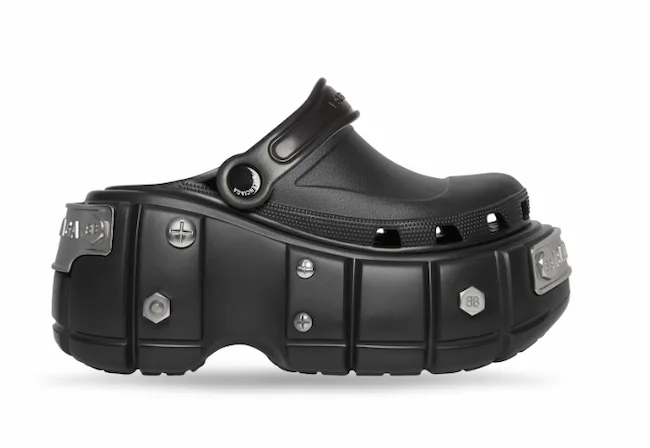
Why the Balenciaga Co-branding Campaign Works
This high fashion brand uses Crocs’ accessible shoe brand to expand and reinforce its experimental ideas. Then, it places those experiments in public spaces to create excitement and engagement with the audiences for both brands.
5. Kanye & Adidas
Co-branding Campaign: Yeezy
Kanye West partnered with Adidas in 2015 to develop a high-end footwear line called Yeezy. The combination of Kanye’s personal brand and Adidas’ growing streetwear segment made for robust company earnings and brand growth.
But the brand cut ties with Yeezy in October 2022 due to harmful remarks and behavior, leading to a $655 million loss in sales at the end of that year. The brand began selling Yeezy merchandise again in May 2023, donating some of the proceeds to social justice organizations.
While initially an excellent co-branding partnership for both partners, some might also see this as a brand partnership fail.
-4.jpeg?width=550&height=337&name=21%20Examples%20of%20Successful%20Co-Branding%20Partnerships%20(And%20Why%20Theyre%20So%20Effective)-4.jpeg)
6. BMW & Louis Vuitton
Co-branding Campaign: The Art of Travel
Car manufacturer BMW and designer Louis Vuitton may not be the most obvious pairings. But if you think about it, they have a few important things in common. If you focus on Louis Vuitton’s signature luggage lines, they’re both in the business of travel. They both value luxury. And finally, they’re both well-known, traditional brands that are known for high-quality craftsmanship.
These shared values are exactly why this co-branding campaign makes so much sense. In their partnership, BMW created a sports car model called the BMW i8, while Louis Vuitton designed an exclusive, four-piece set of suitcases and bags that fit perfectly into the car’s rear parcel shelf.
Although the four-piece luggage set goes for a whopping $20,000, the price is right for the target customer, as the BMW i8 starts at $135,700. A price like that kind of makes that luggage set seem like a drop in the bucket.
Not only does the luggage fit perfectly size-wise, but its design and appearance fit perfectly with BMW’s image: sleek, masculine, and high-quality. Turns out both the luggage and some parts of the car’s interior use carbon fiber, strong-yet-light composite material.
Why the Louis Vuitton Co-branding Campaign Works
Both brands knew their target market desired luxury and meticulous craftsmanship. By selling complimentary high-quality products, the brands successfully garnered attention from respective loyal customers.
7. Starbucks & Spotify
Co-branding Campaign: First-of-Its-Kind Music Ecosystem
Starbucks scaled up a premium coffee shop experience into a massive global brand, using music to create an ambiance around its coffee. Spotify, a music streaming platform, has powered almost 25 billion hours of listening worldwide. Starbucks and Spotify forged an innovative co-branding partnership to build a “music ecosystem”, offering artists greater access to Starbucks consumers and giving Starbucks access to Spotify’s expansive discography.

Why the Spotify Co-branding Campaign Works
Through the initiative, Starbucks employees get a Spotify premium subscription, with which they can curate playlists (that patrons can access through the Starbucks Mobile App) to play throughout the day in the shop. This music ecosystem is designed to expand the coffeehouse environment that Starbucks is known for while giving artists greater exposure to Starbucks customers.
The “musical-ecosystem” partnership is mutually beneficial, allowing the companies to reach the other’s audience without sacrificing their brand.
8. Apple & MasterCard
Co-branding Campaign: Apple Pay
Sometimes, co-branding partnerships aren’t just cool projects between two companies — they actually have practical value when the companies work together.
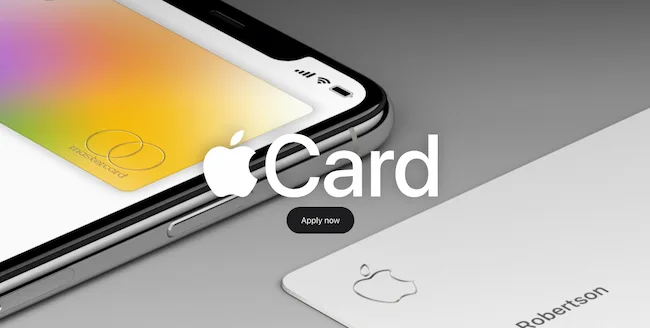
When Apple released the Apple Pay app, the brand effectively changed how people perform transactions. This app allows people to store their credit or debit card data on their phones, so they can use them without physically having the card with them. But for this app to succeed, it needs credit card companies to integrate with this technology. By the same token, credit card companies also face more competition if they aren’t compatible with the latest consumer purchasing tool.
Why the Mastercard Co-branding Campaign Works
To get out ahead of its competition, MasterCard became the first credit card company to allow its users to store their credit and debit cards on Apple Pay. This relationship continued to be useful for both Apple and Mastercard with the release of the Apple Card. MasterCard not only shows continuous support of a major consumer tech developer in this partnership — it evolves with its customers in how they choose to make purchases.
9. Airbnb & Flipboard
Co-branding Campaign: Experiences
You’ve probably heard of Airbnb, the room-sharing application that allows you to find convenient lodging hosted by real people. But its partner, Flipboard, might not be on your radar.
Flipboard is a news aggregator that collects news and topical content that users are sharing on social media, and allows you to “flip” through the material much like a social media feed. Well, Airbnb teamed up with Flipboard to create Experiences, which serve Airbnb users with lifestyle content tailored to their interests and shared by people with similar interests as the reader.
-Aug-05-2022-03-56-17-17-PM.jpeg?width=548&height=337&name=21%20Examples%20of%20Successful%20Co-Branding%20Partnerships%20(And%20Why%20Theyre%20So%20Effective)-Aug-05-2022-03-56-17-17-PM.jpeg)
Why the Flipboard Co-branding Campaign Works
The ongoing campaign recently led to another co-created product called Trips, which allows Airbnb users to connect with hosts with common interests and actually book these experiences when traveling. This partnership is an impressive example of how businesses can connect their customers with information that caters to their individual interests and drive product usage as a result.
10. Uber & Spotify
Co-branding Campaign: Soundtrack for Your Ride
Music-streaming app Spotify partnered with ride-hailing app Uber to create “a soundtrack for your ride.” This is a great example of a co-branding partnership between two very different products with similar goals— to earn more users.
When riders are waiting for an Uber ride, they’re prompted to connect with Spotify and become the DJ of their trip. Users can choose from their own playlists to determine what they’ll listen to.
Why the Spotify Co-branding Campaign Works
This smart co-branding partnership helps fans of Uber and Spotify alike enjoy better experiences thanks to the app. And they might be more interested in picking Uber and Spotify over competitors knowing they can enjoy their next ride listening to their favorite tunes.
11. Levi’s & Pinterest
Co-branding Campaign: Styled by Levi’s
Levi Strauss & Co. — one of the world’s oldest and most recognized jean brands — recently joined forces with Pinterest, a social platform where users pin posts they like to their user profiles.
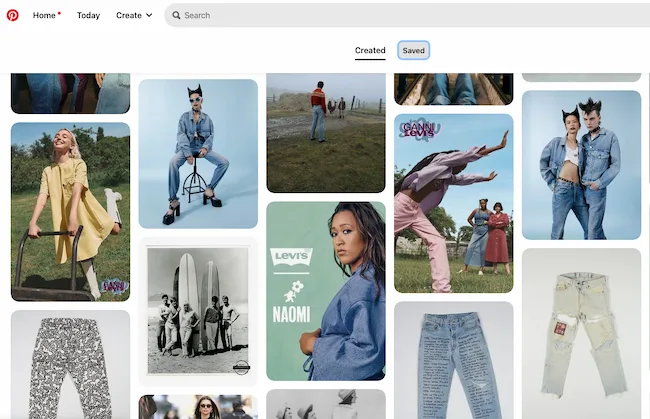
People often turn to Pinterest for fashion inspiration, making a co-branding partnership with Levi’s a natural partnership. Styled by Levi’s is a new initiative between Pinterest and Levi’s that offers a “personalized styling experience,” or style insights tailored to each user’s tastes and preferences.
Why the Pinterest Co-branding Campaign Works
The partnership offers an authentic and individualized brand relationship, which is difficult to come by in an increasingly digital environment. Pinterest offers Levi’s a leading social platform with millions of users interested in visual offerings, and Levi’s meets these needs with digital personalization and visual-focused boards.
12. BuzzFeed & Best Friends Animal Society
Co-branding Campaign: Emma Watson + Kittens
Some co-branding campaigns are more complicated than others. This example from BuzzFeed and Best Friends Animal Society is one of the simplest ones—and it shows that a great co-branding effort doesn’t have to take months of planning or millions of dollars.
For this campaign, Best Friends Animal Society wanted to leverage BuzzFeed’s readership of over 110 million people.
To do this, they partnered with the folks at BuzzFeed to set up and publish an article called, “We Interviewed Emma Watson While She Played With Kittens And It Was Absolutely Adorable,” which you can read here.
The article is exactly what it sounds like: Harry Potter and Beauty and the Beast star Emma Watson answered fans’ questions while she played with cute kittens.
Why the Best Friends Animal Society Co-branding Campaign Works
The article ends with a CTA advertising that the kittens featured in the video are, in fact, adoptable — a win-win for both partners by using celebrity to garner attention for clicks while providing more exposure for animals in need of new homes and donations.
13. CoverGirl & Lucasfilm
Co-branding Campaign: Light Side and Dark Side Makeup
Whenever a new installment of the beloved “Star Wars” series is released in theaters, it causes global pandemonium. The release of “Star Wars: Episode VII The Force Awakens” in 2015 was no exception. The series’ parent company, Lucasfilm, partnered with CoverGirl to capture a broader audience to get new and old fans excited about the movie’s release.
-1.png?width=450&height=524&name=21%20Examples%20of%20Successful%20Co-Branding%20Partnerships%20(And%20Why%20Theyre%20So%20Effective)-1.png)
You might be wondering, “What do “Star Wars” and makeup have in common?” And the cleverness of this partnership is evident in the answer.
In the past, space-age action movies were almost exclusively advertised and targeted toward men and boys. But today, that’s nonsense — because people of all genders can be interested in space exploration and makeup contouring alike.
The line was designed by famed makeup artist Pat McGrath, and it features two styles: the Light Side and the Dark Side, which loyal “Star Wars” fans will recognize as the sides of good and evil in the movies.
Why the Lucasfilm Co-branding Campaign Works
This co-branding partnership was a win for both brands. Lucasfilm captured more attention and got CoverGirl shoppers (many of whom are young women) excited about the film’s release. And CoverGirl hopped on the “Star Wars” advertising bandwagon that took over the internet, stores, and TV leading up to the film’s release.
14. Amazon & American Express
Co-branding Campaign: Amazon Business American Express Card
Ecommerce giant Amazon is a global enterprise with millions of users and almost two million businesses that sell on their platform. Amazon is looking to improve the way small businesses sell on their platform, so they’ve partnered with American Express on a co-branded credit card.
-Aug-05-2022-03-56-16-64-PM.jpeg?width=598&height=239&name=21%20Examples%20of%20Successful%20Co-Branding%20Partnerships%20(And%20Why%20Theyre%20So%20Effective)-Aug-05-2022-03-56-16-64-PM.jpeg)
Why the American Express Co-branding Campaign Works
The card helped users buy goods and services and offered enhanced data insights on their purchasing activity. American Express and Amazon share a commitment to help small businesses grow in the U.S. and by combining their efforts, the two companies had the opportunity to enhance their performance while building brand trust.
15. UNICEF & Target
Co-branding Campaign: Kid Power
If you have the chance to partner for a not-for-profit cause, it can pay off in multiple ways.
Target partnered with UNICEF on a campaign called Kid Power, which committed Target to one of UNICEF’s sustainable development goals (SDGs). The retailer sold kid-friendly fitness trackers encouraging the wearer to complete various fitness activities, which ultimately helped deliver food packets to underprivileged children worldwide.

Why the Target Co-branding Campaign Works
By selling this fun, inexpensive fitness product, Target encourages children to embrace a healthy lifestyle and uses kids’ successes to supply underserved communities with the necessary resources. It’s an ongoing partnership that generates awareness of global malnutrition, helps UNICEF meet its demanding SDGs, and opens up Target to a demographic of families they might otherwise have had access to.
16. Nike & Apple
Co-branding Campaign: Apple Watch Nike
Athletic brand Nike and technology giant Apple have been working together since the early 2000s, when the first line of iPods was released.
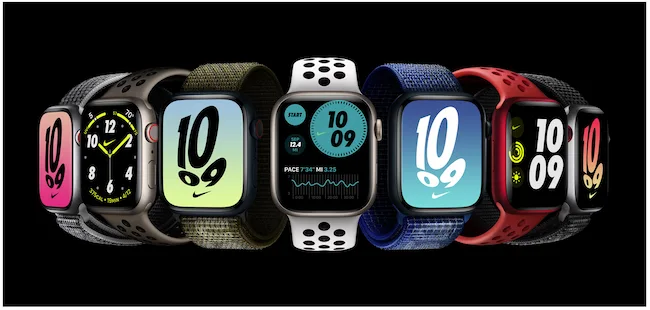
The co-branding partnership started as a way to bring music from Apple to Nike customers’ workouts. Today, Nike Run Club connects Apple Watch users to training, expert coaching, and custom bands that connect runners to a community with the latest technology.
Why the Apple Co-branding Campaign Works
It’s a genius co-branding move that helps both parties give a better experience to customers — and with the popularity of fitness tracking technology, Nike is ahead of the curve by making it easy for athletes to track while they play.
17. Bonne Belle & Dr. Pepper
Co-branding Campaign: Flavored Lip Balm
Dr. Pepper-flavored lip balm. I mean, it’s genius.
-Aug-05-2022-03-56-16-43-PM.jpeg?width=320&height=445&name=21%20Examples%20of%20Successful%20Co-Branding%20Partnerships%20(And%20Why%20Theyre%20So%20Effective)-Aug-05-2022-03-56-16-43-PM.jpeg)
Bonne Belle first debuted Lip Smacker, the world’s first flavored lip balm, in 1973, starting with flavors like strawberry, lemon, and green apple. Just two years later in 1975, the brand forged its first flavor partnership with the timeless Dr. Pepper brand. The result? A lip balm flavor that’s been famous for decades among teenage girls.
If you think the connection between lip balm and Dr. Pepper is a little thin, consider the copy on one of their vintage ads: “It’s the super shiny lip gloss with lip-smacking flavor… just like the world’s most original soft drink.” And later, “From Bonne Belle of course: the cosmetics company that understands your taste.”
Why the Dr. Pepper Co-branding Campaign Works
While you don’t think of flavor and cosmetics, this campaign works because overlapping target demographic consumers can get excited to try an affordable and fun product like Dr. Pepper lip gloss with ease.
Most Surprising Brand Partnerships
Every so often, we hear about a brand partnership that we think doesn’t make any sense — but it leads to a few incredibly memorable, unexpected campaigns. If you want to broaden your horizons of who you should partner with, check out these surprising co-marketing successes.
18. Burger King & McDonald’s
Co-branding Campaign: A Day Without a Whopper
Yes. You read that right: Burger King and McDonald’s — two of the fiercest fast—food industry opponents— joined together for a co-marketing campaign in 2019. And, while we don’t encourage competing brands to do this — the campaign was for an amazing cause.
At the time, McDonald’s was donating $2 to childhood cancer charities for every Big Mac purchased. So, Burger King worked with the competing fast-food chain to host “A Day Without a Whopper.”
For one day, Burger Kings across Argentina and other countries took the Whopper off their menu to encourage people to buy a Big Mac from McDonald’s instead.
-1.jpeg?width=624&name=21%20Examples%20of%20Successful%20Co-Branding%20Partnerships%20(And%20Why%20Theyre%20So%20Effective)-1.jpeg)
Why the McDonald’s Co-branding Campaign Works
Although there were some criticisms of the campaign, because it confused Burger King customers, it was an amazing example of two competing brands that worked together to help a charity. Because of how they partnered up for a good cause, audiences loved the campaign and buzzed about it all over the web.
19. Warby Parker & Arby’s
Co-branding Campaign: The WArby Collection
Warby Parker is known for selling affordable glasses at stores across the U.S. and through nearly fully virtual fitting platforms. Arby’s is a restaurant chain known for its slogan, “We have the meat!”
Looking at the two companies, there’s not much that they have in common. But, this didn’t stop them from creating a co-branded April Fools Day campaign in 2018.
For the campaign, the two brands played up the one major thing they had in common — the fact that the word “Arby” was part of both their names.
On April Fool’s Day, Warby Parker visitors could buy Arby’s themed fashion items, which were part of the cleverly-named WArby Collection.
According to Nylon, items visitors could buy included a WArby’s T-shirt, baseball cap, and tote bag (which also said, “Nice To Meat You” on it). They could also buy a pack of sandwich-themed microfiber cloths and glasses with a raw beef pattern.
-3.jpeg?width=414&height=226&name=21%20Examples%20of%20Successful%20Co-Branding%20Partnerships%20(And%20Why%20Theyre%20So%20Effective)-3.jpeg)
Meanwhile, Arby’s offered food with boxes that had the WArby’s logo on it as well as onion rings with a box that read “Onion Ring Monocle.”
Why Arby’s Co-branding Campaign Works
This campaign shows that you don’t necessarily need a matching audience demographic or a partner in a similar industry to create a campaign that catches a large audience’s attention. Sometimes all you need is a sense of humor and creativity.
20. Taco Bell & Doritos
Co-branding Campaign: Doritos Locos Tacos
When the Doritos Locos Taco was first introduced, it quickly became one of the fast food industry’s most popular and widely recognized items. Frito-Lay took Taco Bell’s crunchy taco recipe and gave the Locos Taco its special, signature twist: a Doritos shell. The two companies wanted to keep the shell as close to the original cheesy chips as possible, using the original corn masa recipe and coating it in that distinctive nacho cheese dust.
The taco was an immediate and explosive success: Taco Bell sold an estimated 1 billion units the first year it was introduced.
Why the Doritos Co-branding Campaign Works
Taco Bell and Frito Lay advertised the Doritos Locos Taco by wrapping the taco in a classic Doritos bag, reflecting the co-branding partnership and appealing to both brands’ audiences. The Doritos Locos Taco’s extraordinary success is yet another example of why co-branding can boost reach and sales for both brands.
21. Tim and Eric & Purple
Co-branding Campaign: Purple Boys
Tim and Eric (a.k.a. Tim Heidecker and Eric Wareheim) are the comedic duo behind Adult Swim shows like Tim and Eric Awesome Show, Great Job!, Check It Out! with Dr. Steve Brule, Tim & Eric’s Bedtime Stories, and Beef House.
Meanwhile, Purple, known for the popular Purple Mattress, often launches unique advertising campaigns which have caught the eye of millennial and Gen Z demographics.
It makes sense for a company to team up with celebrities who can promote their product, Tim and Eric’s comedic style is incredibly random and unique. Although they’re pretty hilarious, as a marketer, you might wonder how this type of comedy style translates into a mattress marketing campaign that actually generates revenue.
While you might think Tim and Eric had to dull down their iconic routine to sell Purple products, this is actually quite far from the truth. In a video series called The Purple Boys, they actually amped up their bizarre antics.
The storylines of Purple Boys episodes often relate to a sleep-related pain point, such as the “Sunday Scaries.” Although the script and special effects are incredibly random, the episodes almost always end with the Purple Boys supplying a sleep-deprived character with a Purple mattress.
To give you a visual of what this off-the-wall comedy series looks like, check out this episode that centers on a sleepy character named Joe Dunder:
Why the Purple Co-branding Campaign Works
Although hiring actors is technically more of a sponsorship than a partnership, this large-scale campaign benefits both parties. While Tim and Eric could spread awareness of their comedy to Purple audiences, Tim and Eric fans might watch these videos for entertainment and learn about Purple’s products along the way.
How to Measure the Success of a Co-branding Business Partnership
According to 2022 Foundry Co. research, 56% of those surveyed said their partner marketing programs offered value in the last year.
But if you’re new to co-branding, how do you measure that success? There are many ways to quantify partnership success. To begin, think about your co-branding partnerships in three stages.
First, have you found the right co-branding partner? Brand compatibility is key. Then, you need to work out how your brands will collaborate.
Consistent messaging, clear communication between partners, and resource distribution will all impact the quality of your combined efforts. This guide to co-marketing can help you get your first co-branding partnership going.
Next, you’ll want to measure the outcomes of your shared efforts. To track a co-branding campaign:
1. Find the Right Metrics
Choose KPIs that both brands track and have easy access to. Be sure that these metrics align with business goals. You’ll want KPIs that you can track to measure specific campaigns, as well as KPIs you can track for the life of your partnership. These might include:
- ROI
- Revenue growth
- Customer retention
- Website traffic
- Social media engagement
- Share of voice
2. Limit Your KPIs
Combining the processes of two different teams can get complicated. To make measuring success possible for both teams, be thoughtful in KPI selection, and resist adding new KPIs for each campaign and project. Try to focus on metrics that tie directly to partnership success.
3. Align Tracking Habits
Create a structure for data tracking that lets you compare results with your partner directly. For example, if they’re tracking views monthly, and you’re tracking weekly, there will be data mismatches that can make things more complex than they need to be.
KPI alignment can help give you a clear picture of your results before the partnership and to track the influence of your partnership over time. This can also help you target where you can improve your co-branding initiatives.
4. Watch the Big Picture
Be sure to track ROI or another KPI like revenue growth to track the overall impact of your new partnership. As you and your partner’s needs and strategies shift, this data offers insight into the long-term value of your efforts.
Finally, to gauge the success of your co-branding partnership, set aside time to do an annual review of the partnership. You’ll want to check for consistent brand alignment and balanced priorities. Ask yourself:
- Are you running the same campaigns over and over?
- Have results plateaued?
- Are you still coming up with exciting ideas together?
If the answer is no to any of the above, you might need to assess the partnership.
It’s also important to check if your co-branding partnership is continuing to meet stakeholder expectations. If either team isn’t getting their needs met, you may need to revisit your partnership.
This review is also an exciting time to see how changes in your industry could boost your co-branding work. Set aside time to talk to your partner about new strategies and products that might spark even more exciting collaboration.
These strategies for measuring success can help you make sure that your co-branding start isn’t a one-hit-wonder. Instead, it can be a lasting source of value for your business.
Creating a Great Co-marketing Campaign
Although you might not have the budget of the brands noted above, you can take note of their creativity, level of storytelling, and how they pooled their resources to connect their separate brands in a mutually beneficial way.
As you search for the best co-marketing partner for your brand and build a winning campaign, we hope you find some inspiration for your next stellar launch.
Editor’s Note: This article was originally published in September 2020 and has been updated for comprehensiveness.
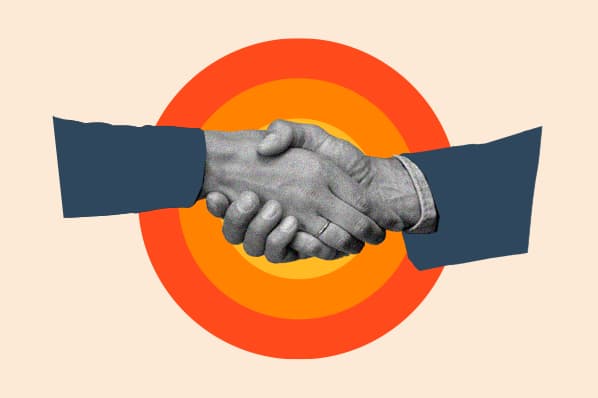

-2.png?width=624&name=21%20Examples%20of%20Successful%20Co-Branding%20Partnerships%20(And%20Why%20Theyre%20So%20Effective)-2.png)

